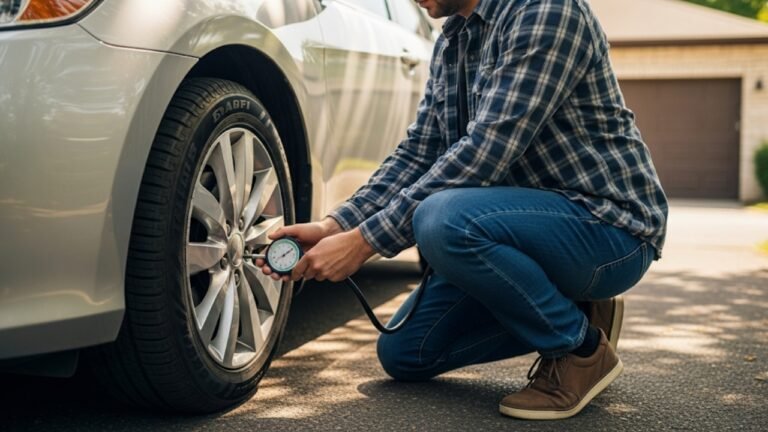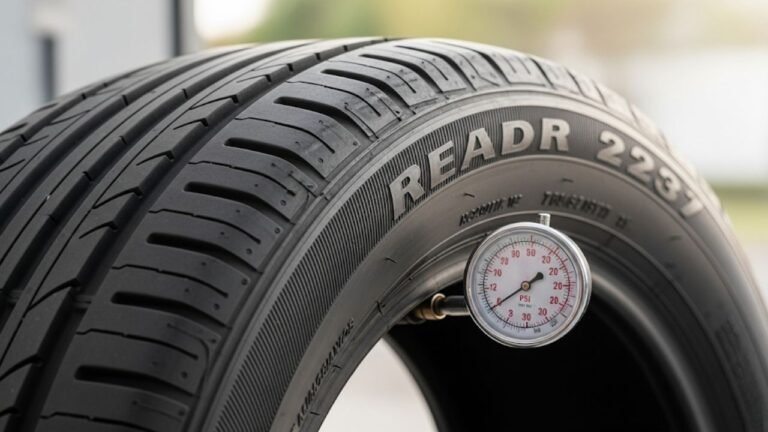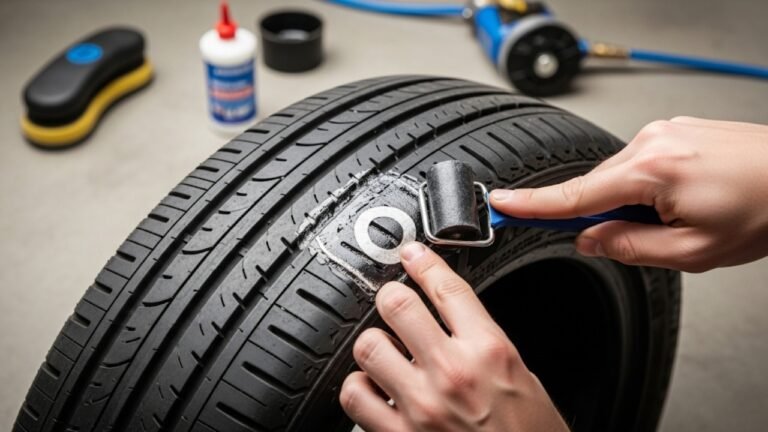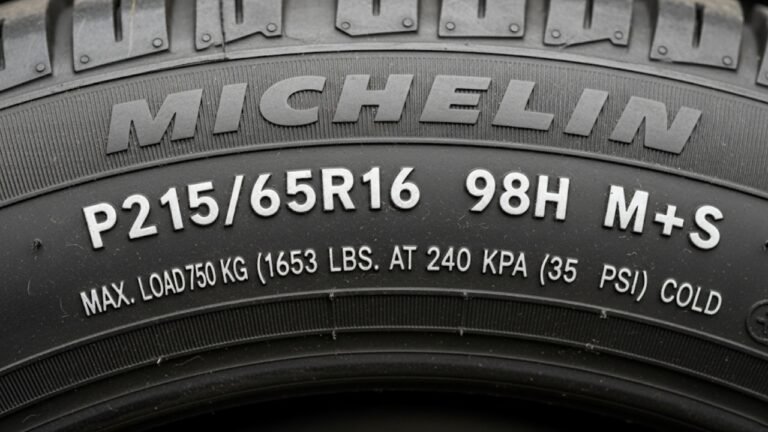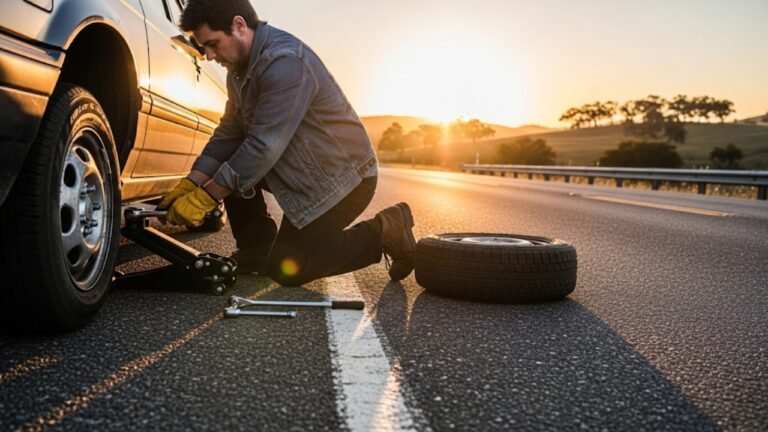Is 33 Tire Pressure Too Low? A Friendly Guide
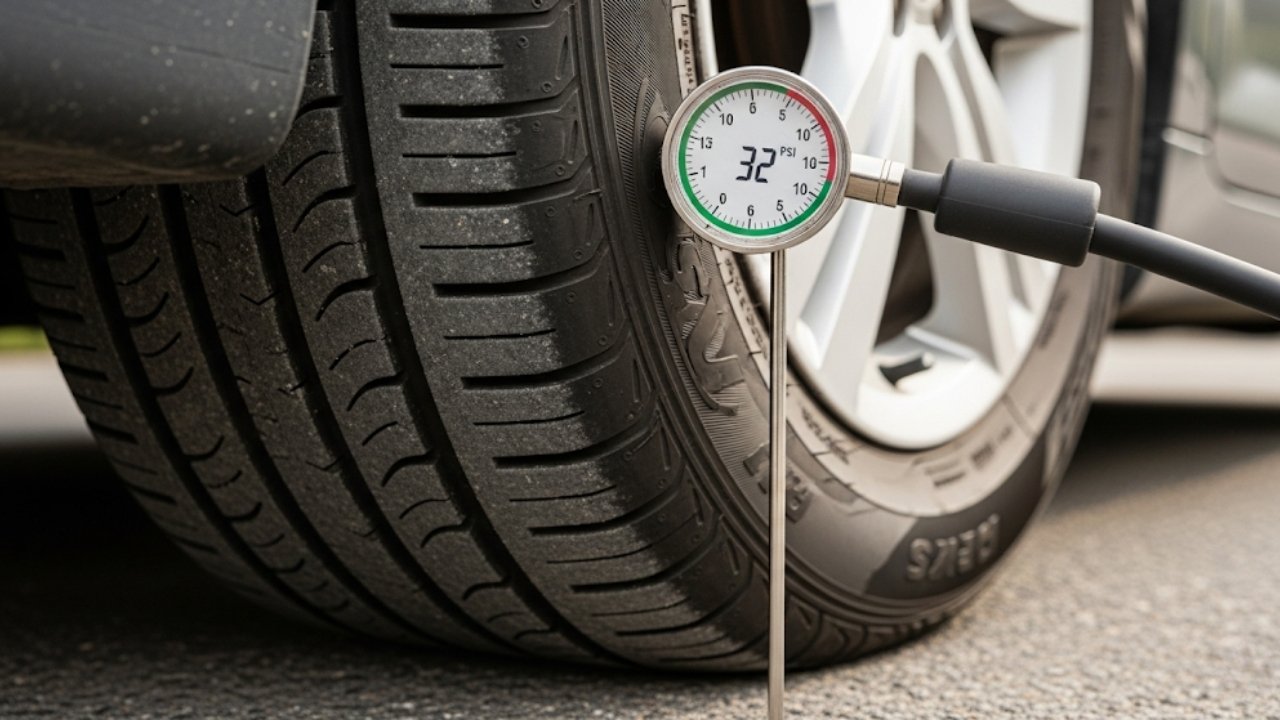
Let’s be real — most of us ignore our tire pressure until the little warning light pops up on the dashboard. It’s easy to overlook, especially when life is already hectic. But one morning, as I pulled into the gas station, I noticed my front tire looked a bit soft. I checked and saw it was at 33 PSI. My first thought? “Is 33 tire pressure too low?”
That question isn’t just about numbers. It’s about safety, comfort, and fuel efficiency. And honestly, it’s a concern we’ve all faced — whether we’re new drivers, busy parents, or daily commuters.
In this guide, I’ll walk you through the real answer, backed by experience and facts, to help you know exactly what to do when your pressure hovers around 33 PSI. You’ll learn more than numbers — you’ll learn what they mean for you and your car.
Understanding Tire Pressure: Why It Matters More Than You Think
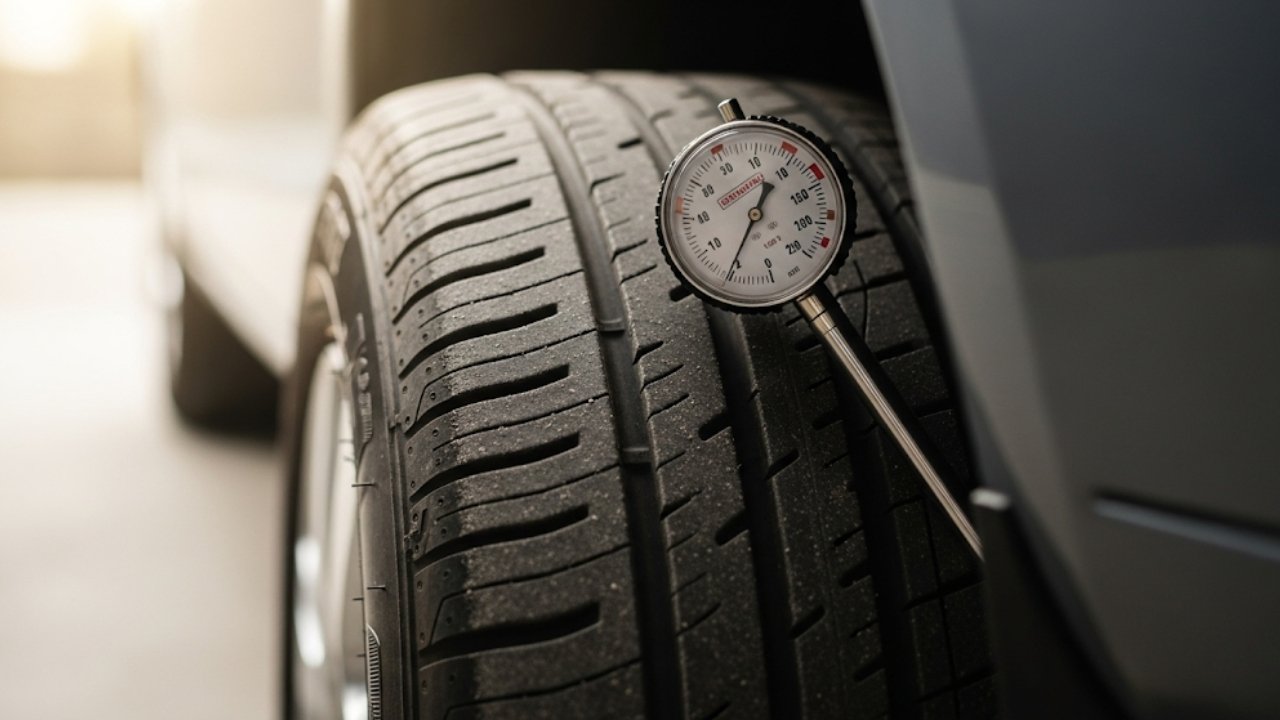
Here’s what proper tire pressure affects:
-
Safety – Prevents blowouts and improves grip
-
Fuel Economy – Lower pressure increases rolling resistance
-
Tire Life – Incorrect PSI causes uneven wear
-
Handling – Low pressure makes steering sluggish
Average Recommended Tire Pressure Chart
| Vehicle Type | Recommended PSI (Cold) |
|---|---|
| Compact Cars | 32–35 PSI |
| Sedans | 33–36 PSI |
| SUVs/Crossovers | 35–40 PSI |
| Pickup Trucks | 36–42 PSI |
So if you’re asking, “is 33 tire pressure too low?”, you’ll notice it’s borderline acceptable — depending on your vehicle type.
Is 33 Tire Pressure Too Low? Let’s Break It Down
Now, to the main question: Is 33 tire pressure too low? Well, the short answer is: it depends. But let’s get into the specifics.
If your car’s recommended PSI is 35 and you’re at 33, then you’re just 2 PSI short. That’s not dangerously low, but it can affect:
-
Braking performance
-
Steering precision
-
Tire longevity
If your car’s ideal PSI is 33, then you’re right where you should be.
Here’s a simple rule:
-
1–2 PSI under = Usually safe, but check soon
-
3–5 PSI under = Caution, inflate ASAP
-
5+ PSI under = Unsafe, fix immediately
A small drop might not feel drastic, but over time, it adds up. Like a dripping faucet that eventually floods your kitchen — ignore it too long, and problems start multiplying.
How Temperature Affects Tire Pressure
Ever noticed your tire pressure drops on a chilly morning? That’s not your imagination.
For every 10°F drop in temperature, your tire pressure can fall by 1–2 PSI. So even if you set it perfectly last month, cold weather can quietly lower it to 33 PSI.
This makes winter months tricky. That’s why many drivers wonder, “is 33 tire pressure too low?” more often in November than in July.
Pro Tip:
Check tire pressure early in the morning before driving. That’s when it’s most accurate.
How 33 PSI Affects Different Vehicles
Let’s look at how 33 PSI behaves across vehicle types:
Small Cars (e.g., Honda Civic, Toyota Corolla)
Most of these are rated for 32–35 PSI. So 33 PSI is often right on the money. Nothing to worry about here unless you’re fully loaded with passengers or luggage.
SUVs (e.g., Toyota RAV4, Ford Escape)
SUVs often require 35–38 PSI. So 33 could be slightly low. You might feel it in cornering, especially at high speeds. It can also affect braking.
Pickup Trucks (e.g., Ford F-150, Ram 1500)
Larger trucks sometimes run up to 42 PSI. In this case, 33 PSI is way too low. Driving like this could wear the sidewalls, reduce towing capacity, and increase risk of tire failure.
Symptoms of Low Tire Pressure (Even If It’s Just 33 PSI)
You might not even know your pressure is low unless the dashboard warning shows up. But your car does try to tell you in subtle ways.
Here are common signs:
-
Steering feels heavier or sluggish
-
You need more gas than usual
-
Uneven tire wear on edges
-
Car pulls slightly to one side
-
Braking takes longer than normal
If you’re feeling any of the above, don’t ignore it. Even 33 PSI can be a sign that something’s just a little off.
How to Know the Right Tire Pressure for Your Car
Forget guessing. The best way to know the correct PSI is by checking the sticker inside your driver-side door. It’ll tell you exactly what your car needs — front and rear tires may even differ.
Do NOT rely on the PSI printed on the tire itself. That’s the maximum load capacity, not the ideal pressure for your specific car.
Quick Tips:
-
Check pressure monthly, not just when the light comes on
-
Use a digital pressure gauge for accuracy
-
Inflate when tires are cold, not after driving
Personal Experience: When I Ignored 33 PSI and Regretted It
Last winter, I drove for weeks with my tires hovering around 32–33 PSI. I brushed it off. “It’s not that low,” I told myself. But then I hit a pothole on the highway. My tire wall was already stressed from the low pressure. It ruptured instantly.
I spent two hours waiting for roadside assistance in freezing weather, all because I didn’t take those 2 PSI seriously. Lesson learned: “almost okay” is not okay when it comes to tire pressure.
The Hidden Danger of Overcompensating for Low Tire Pressure
It’s easy to swing the other way. After realizing your tire pressure is low, you might be tempted to overfill—”just in case.” But too much pressure isn’t the solution either. In fact, overinflated tires can:
-
Make your car feel bouncy and unstable
-
Reduce the contact patch, lowering grip on the road
-
Cause excessive wear in the center of the tire
-
Increase the chance of a blowout on hot roads
So while you’re asking “is 33 tire pressure too low?”, don’t accidentally pump it to 40+ PSI thinking more is better. Always aim for the manufacturer’s recommendation.
Think of it like a balloon. A slightly deflated one sags, but an overblown one? It’s one pothole away from popping.
Can You Drive with 33 PSI Tire Pressure?
Yes, in many cases, driving with 33 PSI is technically okay—but it’s not ideal for all vehicles.
If your car’s recommended range is 32–35 PSI, then 33 PSI fits perfectly within that window. However, if your manual says 36 PSI, then 33 is too low to ignore for long-term use.
What matters is:
-
Load: If you’re carrying heavy passengers or gear, pressure should be on the higher end
-
Speed: High-speed driving demands more air pressure for stability
-
Temperature: As mentioned earlier, colder air lowers PSI naturally
TL;DR: Short city drives on 33 PSI? Probably fine. Long highway trip with a full car? Top up first.
When to Check Tire Pressure (And Why It Changes Often)
You can have the right tire pressure today and find it off next week. That’s because tire pressure is more sensitive than we think. Here’s why it fluctuates:
Common Factors Affecting PSI:
-
️ Temperature swings (seasonal or overnight)
-
️ Potholes and rough roads (can cause slow leaks)
-
Extra weight/load in the car
-
⏰ Natural air seepage over time (1–2 PSI lost per month)
Best Time to Check Tire Pressure:
-
First thing in the morning
-
Before long road trips
-
After temperature changes (especially early fall/winter)
Pro tip: Make checking PSI part of your monthly routine. Just like brushing your teeth, a quick habit can prevent bigger problems.
How to Correct Tire Pressure at Home
Checking and adjusting tire pressure sounds intimidating—but it’s easier than boiling an egg. Here’s how you can do it without visiting a mechanic:
What You Need:
-
A reliable digital tire pressure gauge
-
An air compressor (you can find one at gas stations or buy a portable one)
Steps:
-
Park your car on flat ground and make sure tires are cold
-
Remove the valve cap and press the gauge to get a reading
-
If it reads 33 PSI and your manual says 35, you need to add 2 PSI
-
Connect the air hose, inflate, then recheck
-
Replace the valve cap
That’s it! Takes 5 minutes, tops.
Tire Pressure Monitoring System (TPMS): Is It Always Right?
Modern cars come with TPMS sensors that warn you when tire pressure drops too low. But here’s the twist—they’re not always precise.
The light usually triggers when pressure falls 25% below the recommended level. That means:
-
If your PSI should be 36
-
You’ll get a warning at 27 PSI, not 33
So don’t wait for the dashboard light. If you’re wondering “is 33 tire pressure too low?”, your TPMS might not even alert you—but it’s still worth checking manually.
Let’s Get Practical: Tire Pressure Do’s and Don’ts
✅ Do:
-
Use the vehicle manufacturer’s PSI, not the tire’s max PSI
-
Check monthly and before long drives
-
Inflate when tires are cold
-
Keep a pressure gauge in your glovebox
❌ Don’t:
-
Ignore 33 PSI if your car needs more
-
Inflate based on how a tire “looks”
-
Assume TPMS will catch every issue
-
Add “a little extra” without checking your manual
FAQs About Tire Pressure and the 33 PSI Dilemma
1. Is 33 tire pressure too low for highway driving?
Answer: It depends on your car’s specs. If your vehicle requires 35+ PSI, then 33 could reduce stability at higher speeds. Top it up before long trips.
2. Can 33 PSI cause a flat tire?
Answer: Not directly. But if you’re driving on underinflated tires consistently, they can wear faster and become more prone to punctures or blowouts.
3. Why does my tire pressure drop even if there’s no leak?
Answer: Cold weather, altitude changes, and natural air seepage all reduce pressure. It’s normal to lose 1–2 PSI monthly.
4. Is 33 PSI good for front and rear tires?
Answer: Some cars recommend different pressures front vs rear. Check the sticker inside your driver-side door for the exact values.
5. Will overinflating my tires help compensate for low pressure?
Answer: Nope! Overinflation is just as risky—it makes your ride uncomfortable and increases blowout risks.
6. What happens if I drive on 33 PSI for months?
Answer: Your tires may wear unevenly, your fuel economy will suffer, and over time, you might notice steering issues or tire wall damage.
7. How often should I check my tire pressure?
Answer: Ideally once a month. More frequently during seasonal shifts or if your car feels “off.”
8. Can I trust gas station pressure gauges?
Answer: They’re okay in a pinch, but not always accurate. It’s better to carry a personal digital gauge for consistency.
Conclusion: The Pressure of Getting It Right
So, to bring it full circle—is 33 tire pressure too low? It’s not a universal yes or no. It’s a soft middle ground. For some cars, it’s just fine. For others, it’s just low enough to mess with your handling, fuel efficiency, and peace of mind.
Tire pressure is like that quiet friend who doesn’t speak much but says important things. Listen early, and you’ll save yourself from a whole lot of headaches.
Just like how we check our own health—tire pressure checks should become second nature. It’s a small act of love for your car, your safety, and your wallet.
So next time you glance at that number and wonder, “is 33 tire pressure too low?”—you’ll know the answer. Not just with numbers, but with confidence.

